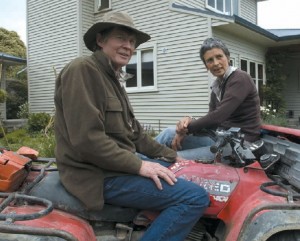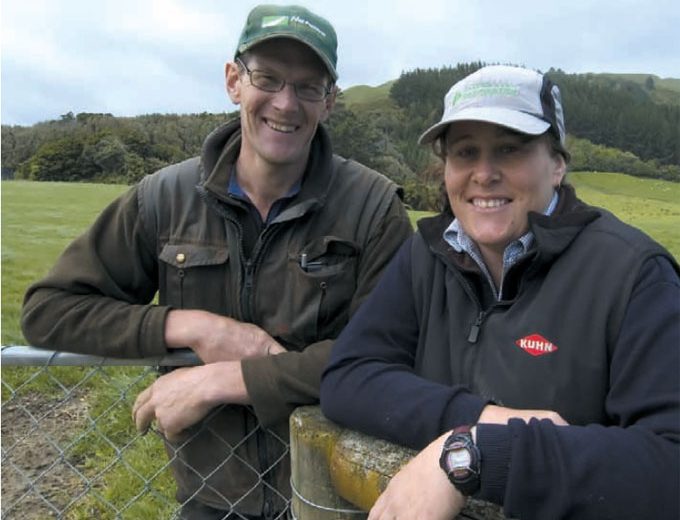You must be logged in to post a comment.
Archive
Adjacent to the main highway between Napier and Wairoa, Lake Tutira is a refreshing change to the scenery of steep hill country with its picturesque shore set against a backdrop of regenerating bush, farmland, and rocky outcrops.
| Type of operation | Sheep and Beef / Farm Park |
|---|---|
| Years of dicalcic use | 12 years |
| Size of farm (effective) | 320ha |
| Stock | 1,200 ewes, 110 cows, 1,550 lambs |
| Soil type(s) | Steep hills: Kidnappers Silt Loam/Medium hills: Tutira Sandy Loam/Flats: Twyford Silt Loam |
| 2008 production | 17kg (av) lambs |
| Average rainfall | 60 inches |
| 2008 product used | 50:50 Hatuma Dicalcic & Generate @ 350kg/ha |
Blue and Helen McMillan have been farming their property here since arriving back from England. In that time they have helped oversee the transformation of this iconic slice of Hawke’s Bay into a model example of sustainable land use. Their home, overlooking the southern end, is a reflection of their attitude to the environment; quails roam the garden, giant wood pigeons hang in branches, while two ring necked doves will sit beside you if they think there’s a chance of a feed.
Before farming the property full time, Blue was employed by Tutira Station as part shepherd, part outdoor education instructor, working with school groups and teaching them outdoor pursuits like canoeing, abseiling, and the merits of conservation projects. Eventually the Hawke’s Bay Regional Council (HBRC) bought 450ha of lakefront land off the station with the objective of improving Lake Tutira’s water quality. Blue and Helen began leasing off the Council and farming approximately 240ha that ran adjacent to their own 80ha left of the original McMillan family farm, and allowed the steep slopes to revert back to kanuka.
With concerns over the degraded water quality through years of intensive pastoral farming within the Tutira catchment, one of the first things Blue and the Council did was meet to discuss using a sustainable topdressing product, something that wasn’t going to compound the nutrient damage already in place. ‘My background in conservation was a definite reason to begin working with Hatuma’s dicalcic,’ Blue says. ‘Farming to what the environment will allow is our biggest issue and we find the non water-soluble nature of the dicalcic fulfils our requirements, as well as fitting our regime regarding sustainability and production. I’m not that worried about increasing stock numbers, I’m more interested in getting a sustainable level of stock to suit the land. Currently we’re
running 1,200 ewes to the ram and about 110 cows. Last year we sent approximately 1,550 lambs straight to the works at an average of just over 17kg.
The first thing I noticed after using dicalcic was the improvement in stock health. I haven’t needed to dip for flystrike in the last five years. I still drench a bit, but I feel I don’t have to poke the chemicals down the stock like I used to, certainly not as routinely as many other farmers, so the stock health costs have come down significantly. The silty areas left from the landslides during Cyclone Bola turned to browntop, but with the dicalcic the clover came back by itself without re-sowing. Now the cover is better quality, resulting in easier pasture management. The paddocks are now far more evenly grazed.’




 520 Maharakeke Rd, Waipukurau
520 Maharakeke Rd, Waipukurau

 0800 80 65 65 /
06 858 8567
0800 80 65 65 /
06 858 8567 06 8588018
06 8588018
Leave a Reply